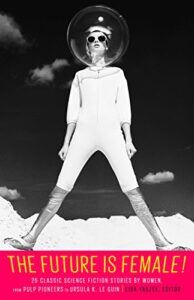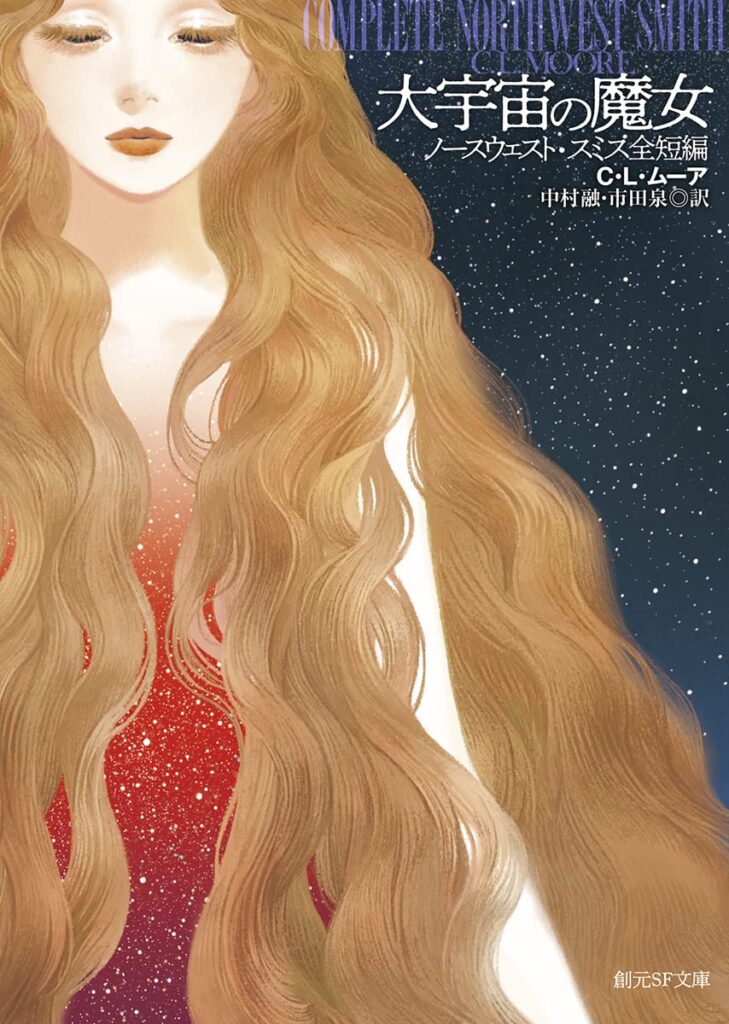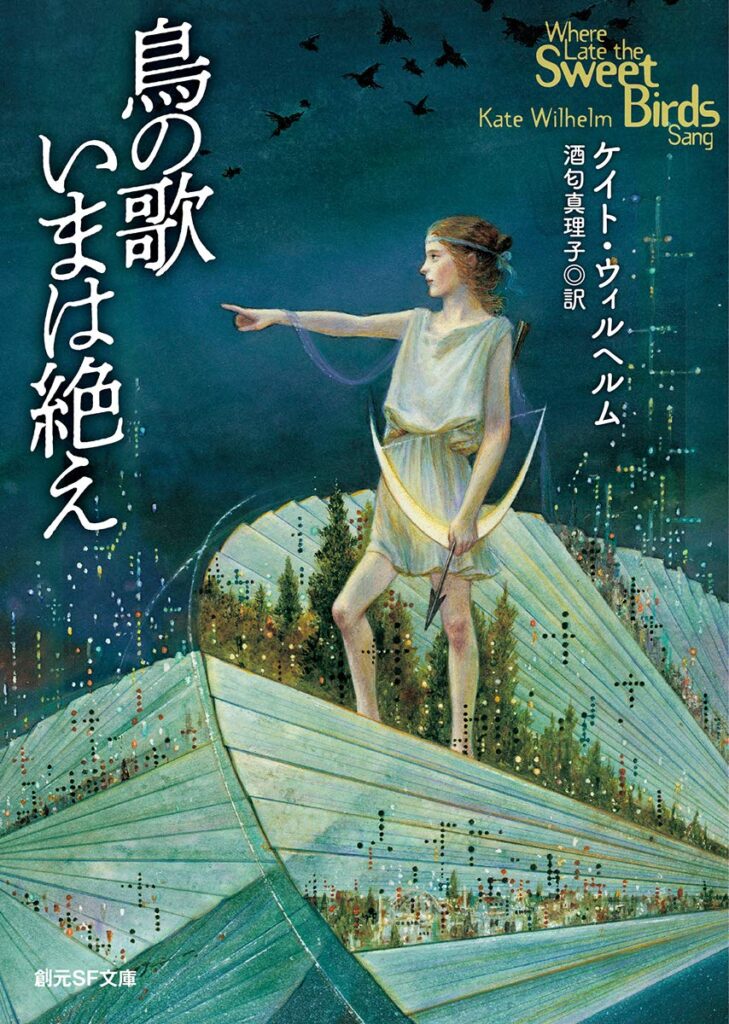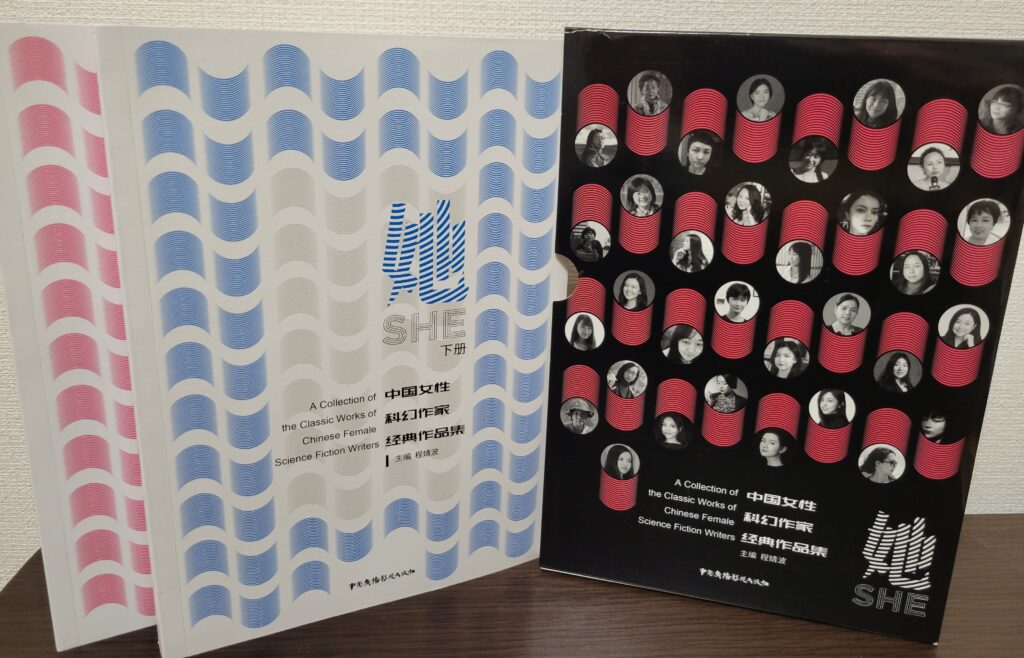vol.0 What do you mean by science fiction?
vol.1 Makeup, Fashion, and Transformation
vol.2 The History of Cyberpunk
vol.3 From Afrofuturism to Africanfuturism
The First Female Science Fiction Writers
If you are asked to name a science fiction writer, who comes to your mind immediately?
Is the SF author who came to your mind a male author? I wish that the answers are various.
In this series, I will write about the gender balance in SF until not so long ago, also introduce forgotten works that help us imagine a better future.
When we begin to view the history of SF through the lens of gender, there is enough substance to catch our attention, or even make a brilliant anthology or two, if not more. For example, The Future Is Female! anthology (Ed. Lisa Yaszek, 2018) collects “25 Classic Science Fiction Stories by Women, from Pulp Pioneers to Ursula K. Le Guin.” These female authors belong to two broad categories: writers from the pulp era (1920s-1940s), and writers after the 1970s, when the field of science fiction started to expand and diversify in terms of female representation.
Among the female writers of the pulp era, C. L. Moore (1911-1987) is probably the most well known in Japan. In November 2021, Moore’s collection The Complete Northwest Smith (tr. by Tohru Nakamura and Izumi Ichida) was published in Japan. Previously, Leigh Brackett and Andre Norton were translated into Japanese a lot, but those books were mostly out of print.
US Women Writers in the 1970s
In the 1970s, a lot of brilliant and talented female writers appeared on the scene, which prompted the legendary Harlan Ellison to proclaim: “The best writers are the women.”
Ellison was referring to the work of Pamela Sargent (1948-), among other female writers of her generation. In the first volume of The Women of Wonder (1975) anthology series edited by Sargent in the late 1970s, she raised the matter of female representation in the field: “Most science fiction has been written by men, and they still form a majority of the writers today. About 10 to 15 percent of the writers are women.”
Sargent’s introduction to the anthology titled “Women and Science Fiction” was immediately translated and published in the November 1975 issue (Women Writers special issue) of Hayakawa’s S-F Magazine in Japan. The issue includes works by Shirley Jackson, Ursula K. Le Guin, Zenna Henderson, Carol Emshwiller, Marion Zimmer Bradley, and two Japanese female writers: Izumi Suzuki and Yūko Yamao.
Japanese translators and anthologists Tohru Nakamura and Makoto Yamagishi edited a five-volume anthology series 20th Century Science Fiction (2000-2001, Kawade Shobo Shinsha Publishers), and it is a great resource to discover women writers in the 1960s and 1970s. Sadly, many of the books by woman writers from these two decades are out of print in Japan. There are a few exceptions like Kate Wilhelm’s Where Late the Sweet Birds Sang (translated by Mariko Sakou), also major works by Ursula K. Le Guin.
Why are Women SF Writers Missing?
Most often than not, women SF writers tend to be forgotten. One of the reasons is the underlying structural bias or absence of women in the position of power or influence in our cultural institutions and beyond, which has made it difficult for women to win award nominations, media coverage or popular acclaim.
British SF editor and critic Niall Harrison surveyed book reviews published in the anglophone SFF magazines to determine the gender balance of the authors and reviewers. The result showed that 70% of reviewed authors and the critics who were evaluating those authors were men. But the gender balance of authors of SFF books published in the UK and US is 55:43 (male:female) in the same year. There were no venues where the female ratio of reviewed authors exceeded 40%.
This is not a unique situation prevalent in the field of science fiction alone. VIDA: Women in Literary Arts surveyed the gender balance of book reviewers and reviewed authors in literary magazines every year from 2009 to 2019, and the result was similar: men tend not to review books written by women. The reverse is not true.
Female writers have been often overlooked and underrated. The problem is not only the absence of book reviews in the popular media but also the absence of nominations in the selection process of awards. It creates a vicious cycle: writers who do not receive famous awards or high praise are less likely to be re/discovered. Publishers and agents want to publish works that are more likely to be a bestseller than not. It is very understandable, but also a potential roadblock to struggling marginalized authors.
Apart from the structural reasons mentioned above, another reason it’s worth noting that why women writers, tend to be forgotten. Women who spent take a break from their writing career to build a family, attend to their more time on household duties such as childcare — as women are expected to, out of choice or obligation — than men and might once they left the writing job, it was hard find it hard to return to the field once they are gone even for a short while.
Can we break through such gender bias? Let’s examine the situation in US, UK and China to find the answer.
US
About 75 percent of the writers who won one of the top awards in the genre — the Hugo awards — are men. Until 2010, over 80 percent of the Hugo awards winners were male. The situation changed only in the last decade; the average male ratio since 2010 is 55%. Since 2019, only one or two male authors have been nominated out of six or seven nominees in each category. But the road to this new state of female representation — if not one of dominance — was not smooth or sudden.
The percentage of women in the Science Fiction and Fantasy Writers of America (SFWA) increased 18% in 1974, 36% in 1999, 46% in 2015, and the percentage of women award winners have increased as well. (The changes since 2010 have not been limited to women writers, but that’s a story for another time.)
Despite the progress made by the American women writers, there was an infamous backlash in mid-2010s: Puppygate. Sad Puppies, a group consisting mainly of military SFF writers, claimed that the Hugo awards were controlled by liberal political biases, and they campaigned to influence the award nominations in their favor. A far-right group named Rabid Puppies appeared and attacked the previous winners. Amy Wallace at Wired reported: “They say their beef is more class-based; Torgerson says his books are blue-collar speculative fiction.” More than anything else, the Puppygate controversy reflected the American political divide around Trump era.
Even in the 21st century, there are “some readers seem to have this funny idea that women don’t, or can’t, write science fiction.” Lightspeed magazine launched a special issue by women SF writers to debunk this silly notion. Canadian critic James Davis Nicoll introduced women SFF writers of the 1970s and 1980s in a column series Fighting Erasure. I believe projects like these reflected and contributed to the seismic change going within the SFF communities, and also the larger world when it comes to the recognition, celebration and ascent of women writers in SFF.
UK
In 2011, Guardian asked for a vote for the best science fiction book. Only 4%, 18 out of 500 voted authors were women according to US author Nicola Griffith’s article.
British SF critic and publisher Cheryl Morgan writes on the SFWA website: “No one is expecting a 50:50 split. But 96:4? Really?” She mentioned similar examples from Forbidden Planet’s must-read SF, where only 4 of 50 were written by women. Likewise, the Best Novel category of British Science Fiction Association (BSFA) Awards had a very low number of women winners (2 Best Novel wins in 41 years).
At the end, she points a cultural issue that can cause the problem: For boys, being “girly,” reading or celebrating the works of women SF writers is something to be ashamed of.
As the result of renewed and vigorous demands for gender balance and assertion of “girl power” in the anglophone world, not to mention the superb quality of their works, we are witnessing a welcome change or shift in power in the field of literature in UK and elsewhere. Five of the nine works that won the BSFA Award for Best Novel in the past eight years were written by women!
China
Liu Cixin, Wang Jinkang, He Xi, and Han Song, who are known as the Big Four of Science Fiction in China, are all men. Surprise? Not really.
Zhao Haihong, who has been a regular winner of the Galaxy Award, a fan-vote award held by Science Fiction World magazine, is not among the Big Four. She became the first woman writer to win the Galaxy Award in 1999. She is also known as the Princess of Chinese Science Fiction – a title mentioned even in her latest short story collection published in 2020 even though she prefers to be called “Lady Knight” instead. The problem is: minority people are treated as a separate category regardless of their intentions — as if they don’t belong in the “big” camp! What’s worse is that “beautiful woman writer” is still a common phrase in China and Japan.
Since the early 2000s, the number of women writers born in the early 1980s, such as Xia Jia, Hao Jingfang, Cheng Jingbo, and Chi Hui, were nominated frequently in the Galaxy Awards. According to a tweet by Regina Kanyu Wang, six out of seven judges of the 12th Xingyun Awards were women, and the winners in the best newcomer, short story, and middle-sized short fiction categories were women.
In an interview “Science Fiction and Sexism” (2020), Chinese SF writer Tang Fei says: “Whether they are characters in a novel or novelists themselves, women are defined as the uterus that nurtures men’s minds or men’s flesh, giving birth to replicas either as the mothers of their children, or as their spiritual muses.”“The problem we face is not how many female writers there are, or how many female writers win prizes,” she says, “it is how to define humanity in literature.”
Writer, translator and anthologist Xueting Ni, who published a SF in translation anthology Sinopticon: A Celebration of Chinese Science Fiction (2021), says: “One of the objectives I went in to Sinopticon with was to help platform women kehuan (SF) authors, who are notoriously underrepresented in China.”
In the past few years, anthologies of Chinese women SFF writers have been published one after another like The Way Spring Arrives and Other Stories (Tor, 2022), SFF in translation anthology edited by Yu Chen and Regina Kanyu Wang, and She: a collection of the classic works of chinese female SF writers from 1990-2020 (2021) edited by Cheng Jingbo.
Can You Be the Change?
The gender balance or inadequate female representation is not a unique problem of science fiction alone. The possible reasons for the stereotypical gender image of women could be traced to the era of pulp magazines, more specifically to the masculine image of science, which later fed the masculine image of SF. Presumably the young men, who were the target audience and the loyal readers of these magazines, are now aware of their biases as adults, and making an effort to check or correct their earlier biases.
I don’t think that the gender balance of each genre should always match the population, but we need to face existing problems, and try our best to not let it become worse than it already is. It is equally helpful to note individual names and contributions regard to the work being done by writers belonging to marginalized or minority groups.
In order to map out interesting SF, I think it is essential to take a closer look with a wide-angle lens at the emerging field of global SF today. The good news is that the global community of SF readers and writers are more welcoming of new authors today than at any time before. Let’s continue to make sure that new SF writers are encouraged and allowed to enter the field irrespective of their gender or citizenship.
For my part, here’s what I would like to do: discover and meet new and interesting Women SF writers from around the world. Would you like to join me, read widely, and remember the names of the Women SF writers who are worthy of our time, love and praise? I hope your answer is yes. Thank you!
Edit Sogo Hiraiwa
Translation Teruyuki Hashimoto






